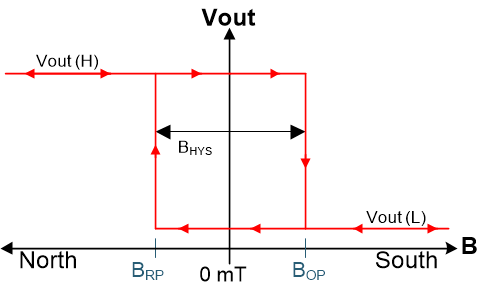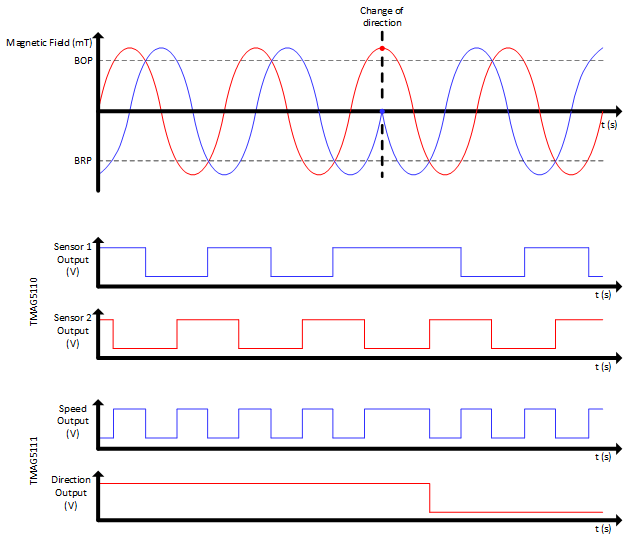SBAA449B October 2020 – October 2021 TMAG5110 , TMAG5110-Q1 , TMAG5111 , TMAG5111-Q1
2 Latch Response of the 2D Hall Effect
First consider the output response of the 2D latch with respect to the input magnetic flux density.
TMAG5110 and TMAG5111 each have two integrated latches that update their results into OUT1 and OUT2. Each of these outputs will then have a latch functionality. Figure 2-1 shows the response to different magnetic poles for each of the outputs. The TMAG5111 outputs are not directly connected to the two integrated latches. Additional calculations have been added to output the speed and direction instead.
 Figure 2-1 Latch Functionality
Figure 2-1 Latch FunctionalityFigure 2-2 shows the magnetic response of TMAG5110 and TMAG5111 to a sinusoidal field. The sinusoidal curves represent the observed magnetic field produced by the rotating magnet.
The TMAG5110 response shows both outputs reacting to this signal by going low once the field exceeds BOP, and likewise each output goes high only when the field component crosses BRP in the opposing direction.
The TMAG5111 response shows how those two signals are used to create both speed and direction as outputs.
 Figure 2-2 Output Behavior
Figure 2-2 Output Behavior